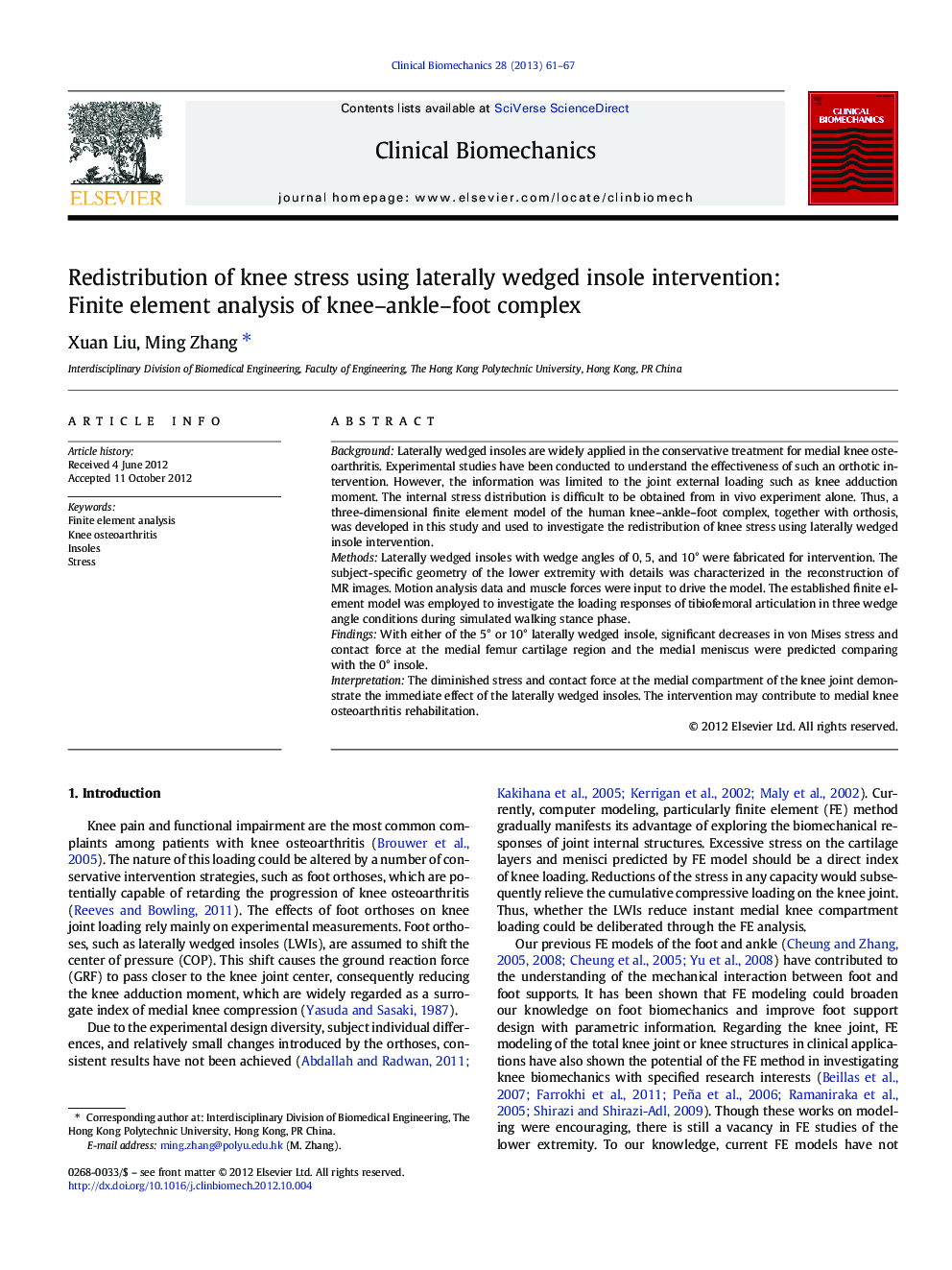| Article ID | Journal | Published Year | Pages | File Type |
|---|---|---|---|---|
| 4050393 | Clinical Biomechanics | 2013 | 7 Pages |
BackgroundLaterally wedged insoles are widely applied in the conservative treatment for medial knee osteoarthritis. Experimental studies have been conducted to understand the effectiveness of such an orthotic intervention. However, the information was limited to the joint external loading such as knee adduction moment. The internal stress distribution is difficult to be obtained from in vivo experiment alone. Thus, a three-dimensional finite element model of the human knee–ankle–foot complex, together with orthosis, was developed in this study and used to investigate the redistribution of knee stress using laterally wedged insole intervention.MethodsLaterally wedged insoles with wedge angles of 0, 5, and 10° were fabricated for intervention. The subject-specific geometry of the lower extremity with details was characterized in the reconstruction of MR images. Motion analysis data and muscle forces were input to drive the model. The established finite element model was employed to investigate the loading responses of tibiofemoral articulation in three wedge angle conditions during simulated walking stance phase.FindingsWith either of the 5° or 10° laterally wedged insole, significant decreases in von Mises stress and contact force at the medial femur cartilage region and the medial meniscus were predicted comparing with the 0° insole.InterpretationThe diminished stress and contact force at the medial compartment of the knee joint demonstrate the immediate effect of the laterally wedged insoles. The intervention may contribute to medial knee osteoarthritis rehabilitation.
